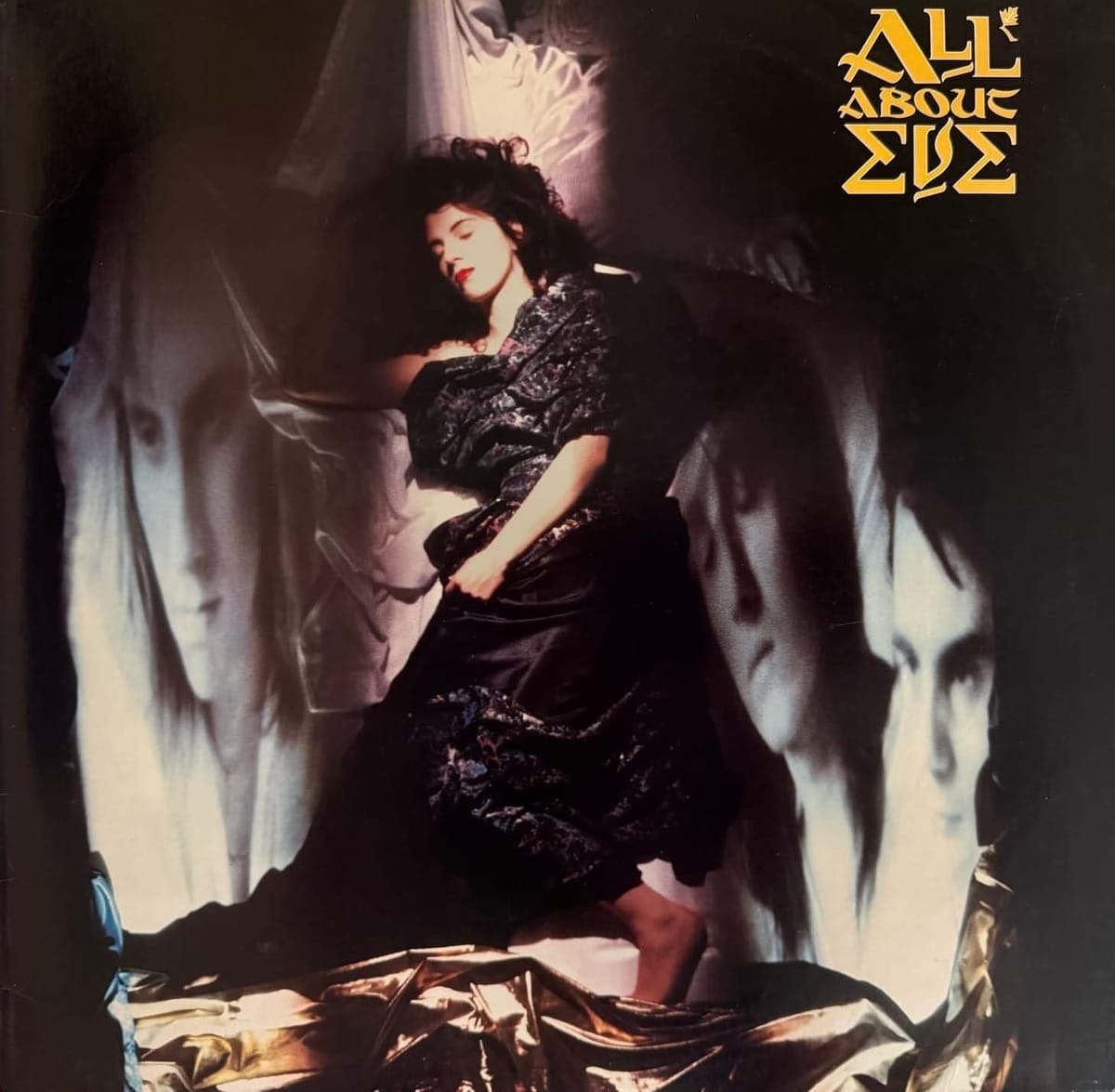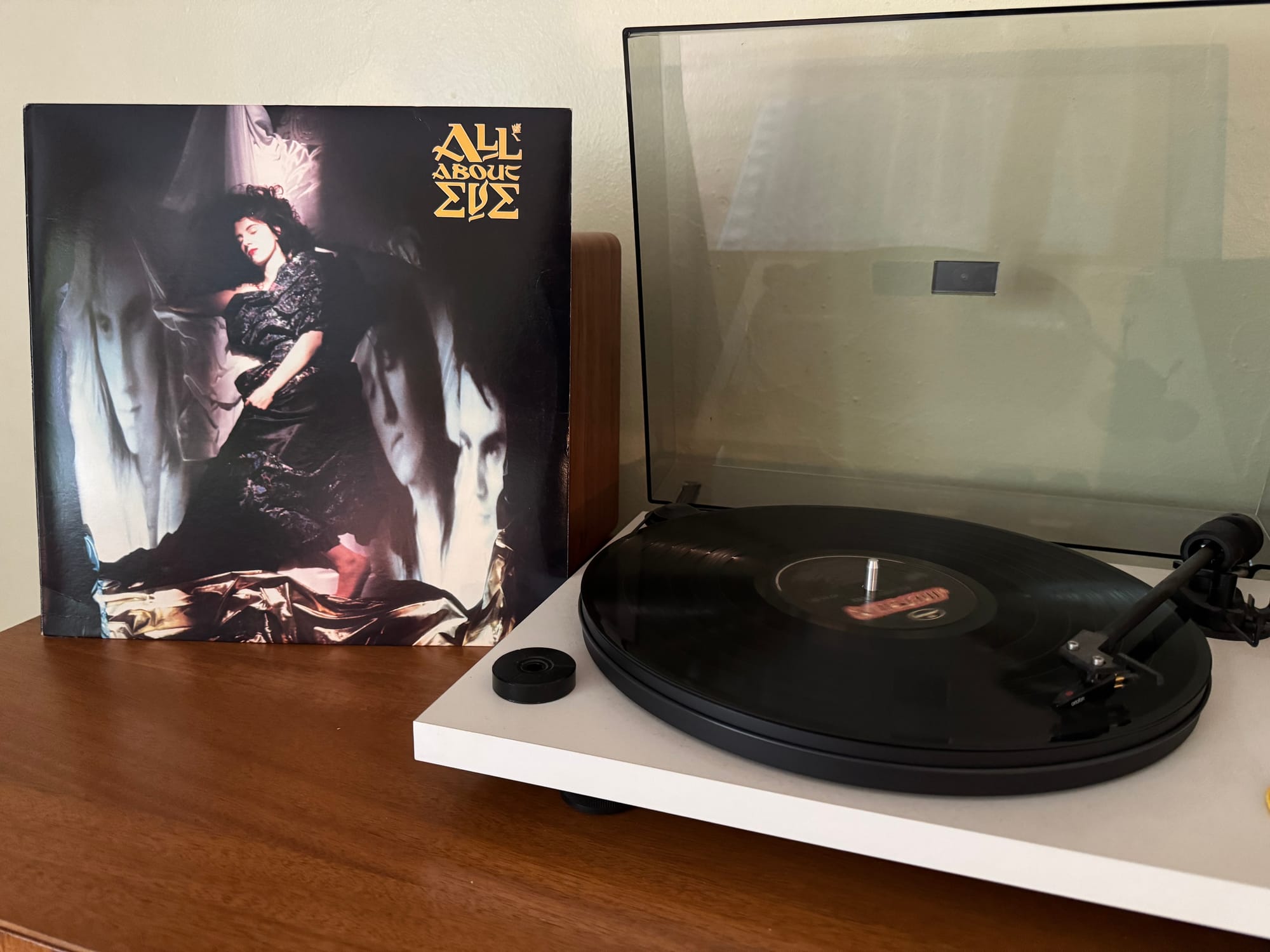All About Eve - Eponymous

I’ve been a fan of Stephen Prince’s writing about English hauntology for several years, as catalogued through his project A Year in the Country, which examines music, film and media depicting an England haunted by the ghosts of imagined pasts, what-could-have-beens, and wisps of what-might-yet-bes. One can point to shows like The Owl Service or The Changes, or folk horror spectacles like The Wicker Man for easy examples of the subgenre, but it’s a theme that weaves its way through 20th century English art.
All About Eve’s eponymous 1988 album is what happens when the jangle of 80’s stalwarts like The Replacements or R.E.M. wander into the spectral fields, wistful for the days of Fairport Convention and Sandy Denny, but unwilling to give up their Rickenbacker guitars or nigh-goth album covers. The album kicks off with a wall of guitars, with singer Julianne Regan indicting the love children of the 60’s asking “where have the flowers gone, sun-children?” and wondering when their long hair and loud shirts will be “something more than a uniform”. Far from tearing down the ideas of peace and love espoused by those sun-children, Regan believes that Gen X will “earn the flowers in our hair”. Returning to an Aquarian ideal is possible, but the children of the 80’s and 90’s are going to have to work for it.
It’s a theme that crops up throughout the album. It becomes its most overtly hauntological on “Never Promise (Anyone Forever)”, where the singer sees an idyllic England around her still, with a “cat at the hearth, dog at the door” in her “slumbering place”, but when she watches the news she no longer feels “safe in our English home”. In Thatcher’s England, in the dawn of the 24 hour news cycle, Regan looks around and sees the imagined English garden, while the news deals in squalor, danger, murder, and terror.
The album ricochets between imagery of flowers and the dangers of ecological and social ruin. A vein of raw idealism runs through it that feels refreshing in a modern 2025 era of cynicism and acceptance. “What kind of fool,” she asks, “lays all that’s precious to waste” or “leaves all their treasure to rust in the rain”. On the following track, In The Meadow, she wonders “how can I live in your world of strawberry hours and colorful flowers”. It is dark in the meadow, but a better world is possible.
Musically, the album lives in a liminal space between early R.E.M. and the heyday of British folk rock. “Gypsy Dance” comes alive with high-strung guitars and images of green fields and dancing travelers, and features Ric Sanders on fiddle, who has played with mainstays like Fairport Convention, Strawbs, and the Albion Band. It bounces to “In the Clouds”, which calls to mind the Cranberries (who would not be a band for another year), before ricocheting back to the Linda Thompson-esque “Martha’s Harbour”, and again back to Peter Buck style guitars on “Every Angel”. Side A’s closing “Shelter From the Rain” merges the 80’s excess with the folk-rock Ren Faire vibe, with sweeping chords and a chance for guitarist Tim Bricheno to stretch out a little bit and flavor the tune with some harder rock licks.
In case you doubt their folky bonafides, side B opens with a take on the traditional “She Moves Through the Fair”, which I still believe Sinead O’Connor does the definitive modern version of, but this one is rendered sparsely and hauntingly with a little less weltschmerz. “Wild Hearted Woman” brings in more of the madrigal sounds, with 12-string guitars and an eBow that makes you think cello while reminding you that it’s 1988.
I love the golden age of English folk-rock, and in particular its chanteuses like Sandy Denny and Maddy Prior. In the same way that this album feels like a hauntological call to a greener, imagined England, it also feels like an artifact of a folk-rock revival that almost was, where classic songs and sounds met the sonics of pre-grunge rock and roll, with Julianne Regan’s voice soaring above it all, a new voice in the pantheon. It feels like a record outside of its time and place, spectral wax in a field of barley, calling to mind an England of the late 80’s that could have been.
